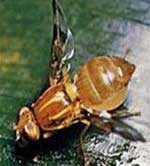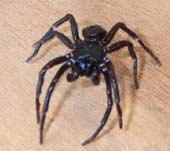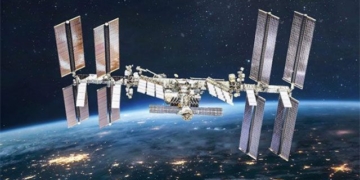The discovery of mold and microorganisms on space stations has raised concerns among scientists about the serious consequences humans might face when they return to Earth.
In 1998, Russia’s Mir space station suddenly encountered numerous issues. Power outages became increasingly frequent, computers malfunctioned, and the air control system experienced leaks, leading astronauts to believe that the space station was aging after 12 years of operation. However, they made a surprising discovery.
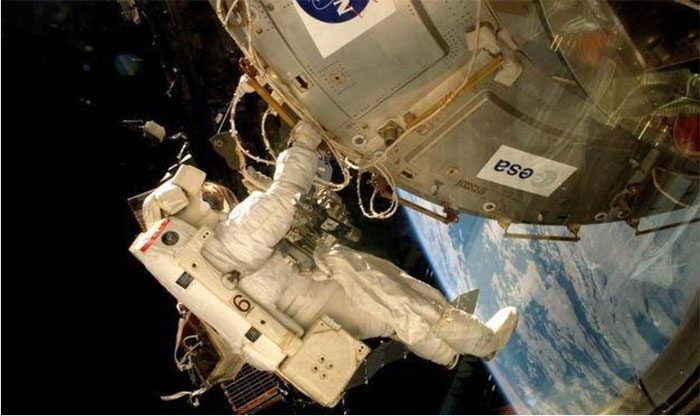
The discovery of droplets filled with Earth mold and bacteria on the space station shocked the astronauts. (Photo: ESA)
An Unexpected Invasion in Space
While inspecting a circuit board, astronauts found several black droplets, each about the size of a soccer ball. Upon collection and analysis, they discovered that these droplets were full of mold and bacteria. These microorganisms were beginning to multiply and corrode components and cables.
In 2018, the International Space Station (ISS) detected an increasing number of bacteria within its confined space. In the gym and restroom, scientists found five different types of intestinal bacteria thriving. After compiling data, they confirmed the presence of both bacteria and mold on the station. Notably, Staphylococcus bacteria accounted for 26%, while Pantoea bacteria made up 23%. The detection of mold and microorganisms on space stations has raised concerns among scientists about the serious consequences humans might face upon returning to Earth.
Moreover, pathogenic bacteria from Earth, such as Staphylococcus aureus, which typically resides on human skin, accounted for 11%, while Enterobacter, which often affects the intestines of various animals, was found in less than 9%.
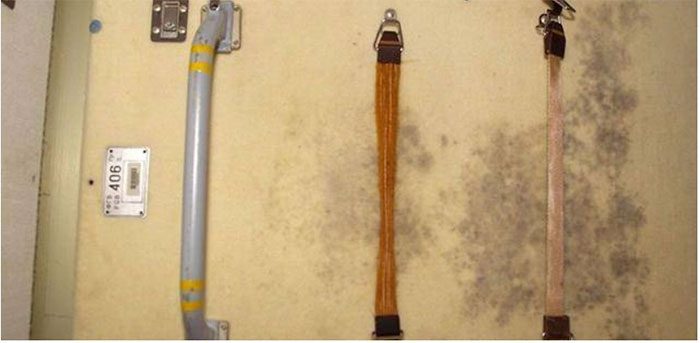
Many devices on the space station have been attacked by bacteria and mold. (Photo: Baidu)
It is noteworthy that the design and construction processes of space stations are rigorously maintained to ensure an incredibly clean environment. From materials to personnel and astronauts, everything is subjected to a sterile environment before being sent into orbit. So where did the bacteria and mold detected in space stations come from?
Bacteria and mold from Earth can pose significant health risks to humans. Therefore, scientists are concerned about whether these microorganisms could harm the bodies of astronauts. A study published in the journal Astrobiology addressed these questions.
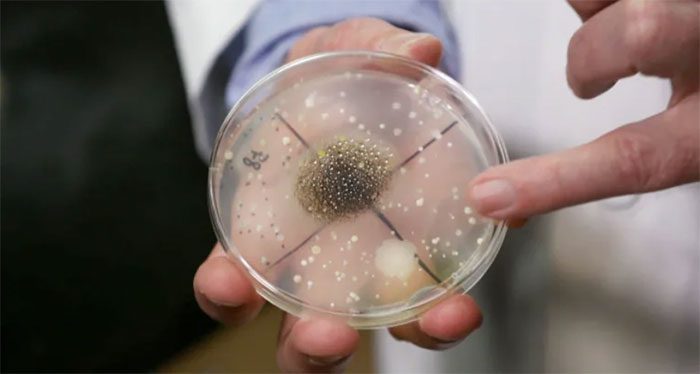
Bacteria and mold on the space station have hitchhiked with astronauts and supplies. (Photo: Baidu)
After conducting the research, NASA concluded that the bacteria on the ISS share characteristics with those found on Earth. They originated from humans. Dr. Kasthuri Venkateswaran from NASA’s Jet Propulsion Laboratory stated that these bacteria and mold may have started from the day equipment was installed. The remaining types likely came from new astronauts and supplies sent to the station.
A Warning of Numerous New Risks
The reality is that the human body is a haven for many different types of bacteria. They choose our bodies as their lifelong home. Consequently, bacteria in the intestines or skin mites in the human body have hitchhiked with astronauts to the space station. In space, they learn to adapt to a new life like the astronauts.

These microorganisms and molds have the ability to develop and mutate to adapt to new life on the space station. (Photo: Baidu)
Microbiologists at the Medical University of Graz (Austria) conducted research on the microbial community aboard the ISS. They collected and sampled these microorganisms for analysis. Christine Moissl-Eichinger, a representative of the research team, stated that the environment in space is incredibly stressful. Not only for astronauts, but microorganisms also face similar challenges.
After their study, experts observed that these microorganisms had evolved to adapt to the new environment. Thus, they are concerned that other harmful microorganisms and molds could also thrive on the space station. These could pose risks to astronauts and the station itself.
Among the 55 microorganisms found on the space station, many have developed higher antibiotic resistance or the potential to harm humans. One notable microorganism called Technophile has developed the ability to damage metals. However, this poses a risk that they could also harm equipment on the ISS, similar to what occurred on the Mir space station. Therefore, in the long run, Technophile microorganisms could complicate the safety and management of the space station for astronauts.
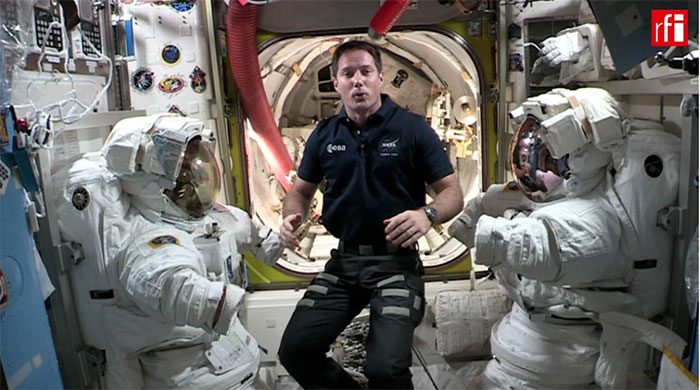
If harmful microorganisms and molds are not addressed soon, astronauts may be at risk. (Photo: RFI)
Additionally, theoretically, these bacteria and microorganisms typically only cause health issues for individuals living in stressful conditions or with severely compromised immune systems. However, other studies have indicated that the prolonged stress of space flights has affected astronauts’ immune systems. Similar to the Technophile microorganisms that consume metals, other microorganisms and bacteria on the space station could also negatively impact astronauts.
In this era of rapidly advancing technology, sending humans into space for tourism on other planets will soon be implemented. This presents a new concern for scientists. Currently, the ISS is situated within the Van Allen radiation belt, so it is exposed to minimal radiation. However, if it passes through this belt, radiation exposure will be stronger, and microorganisms may mutate more rapidly. For scientists, there are indeed countless risks that could arise.
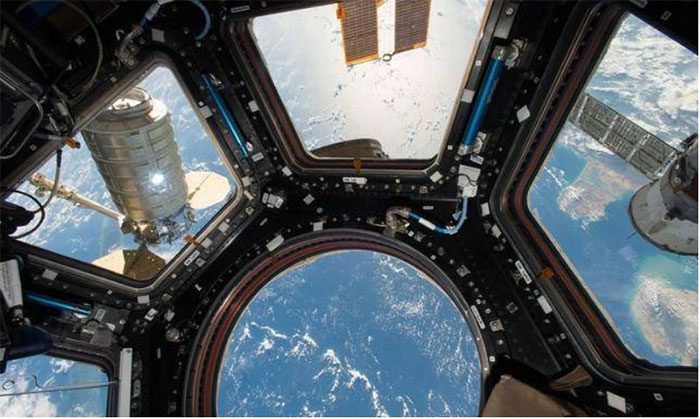
Scientists worry that harmful microorganisms and bacteria on the space station could follow astronauts back to Earth and cause a pandemic similar to Covid-19. (Photo: Baidu)
Especially as space travel becomes more common, dangerous bacteria in space may hitch a ride with humans and return to Earth. Consequently, our planet could be “attacked” by genetically mutated microorganisms from space. Could they cause pandemics similar to Covid-19? So, what measures should scientists take to prevent this “destruction”?
Preventing New “Intruders”
The National Aeronautics and Space Administration (NASA) has developed a laboratory and living area called Gateway to mitigate the risks from space. Astronauts will spend a few weeks here after returning from the Moon, Mars, other planets, or from Earth to these locations.
Only after that can they leave, and this area will remain unoccupied for several months. Scientists believe this is the best way to ensure Earth or other planets are not “contaminated” by microorganisms, bacteria, or mold.
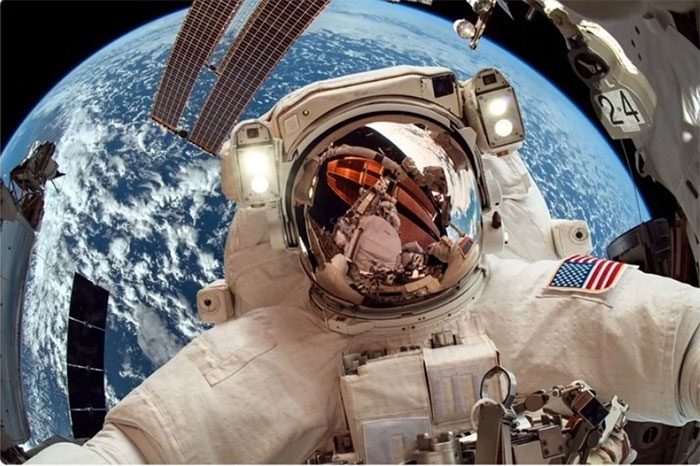
Astronauts must live at transit stations for several weeks before and after returning from other planets to avoid the risk of carrying harmful microorganisms and bacteria. (Photo: Baidu)
Additionally, a new regulation has been established for astronauts regarding the control of microbial populations on space stations. They are required to wipe down surfaces of equipment and objects weekly with antibacterial wipes. Furthermore, they must use vacuum cleaners to remove debris inside the station. These activities aim to maintain cleanliness in the areas and help prevent mold growth on equipment.
They also utilize technical means to filter the air and keep water clean. Scientists believe that only by implementing these measures can we minimize the risks and damage caused by harmful bacteria, microorganisms, and mold.








































